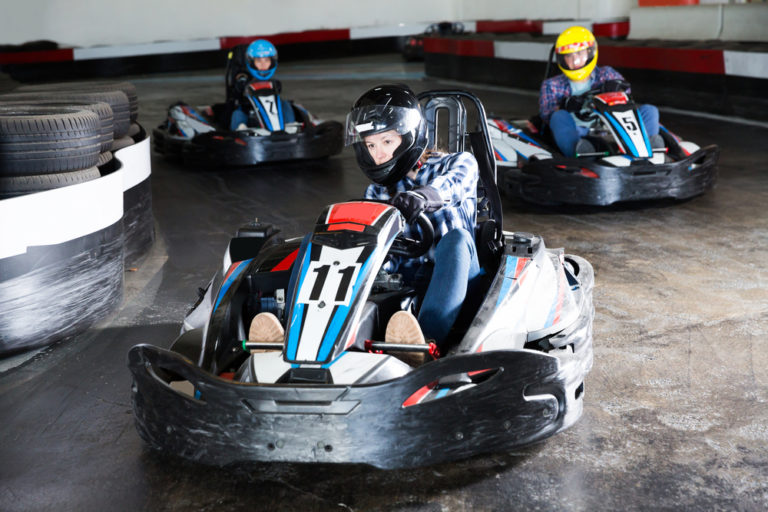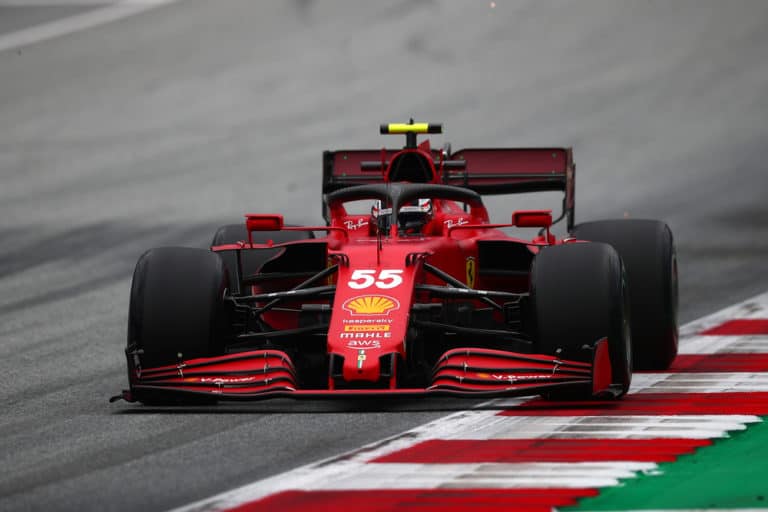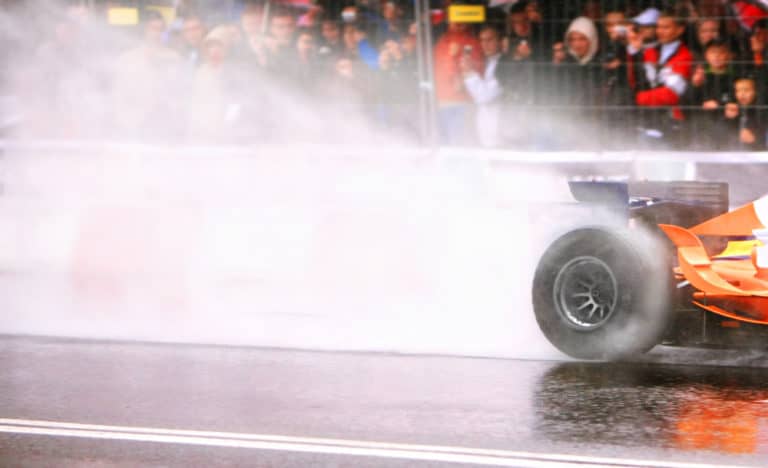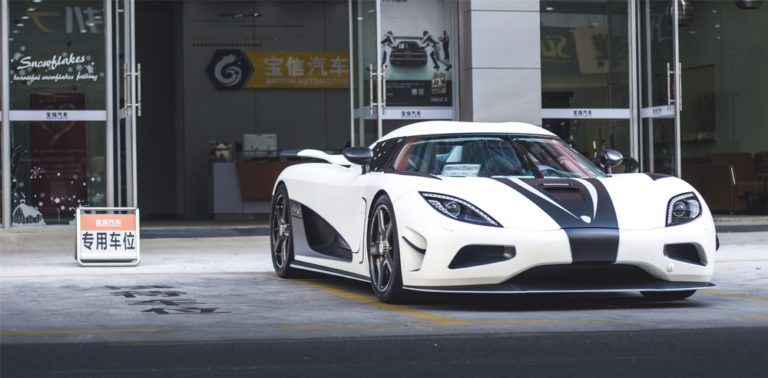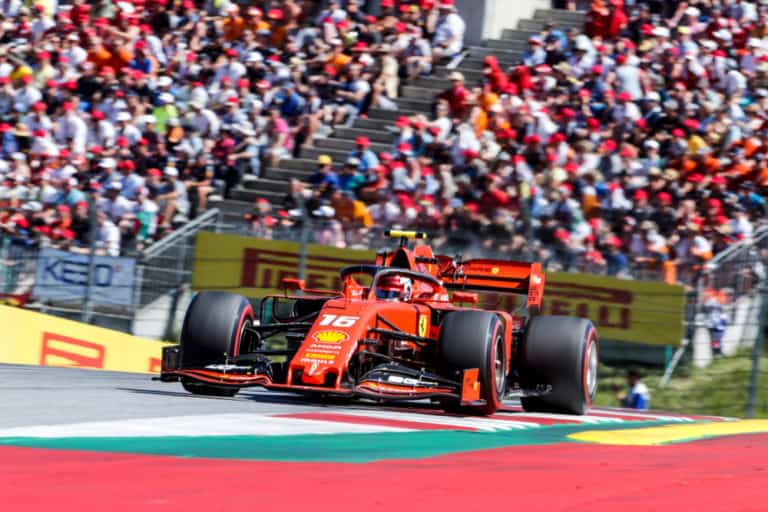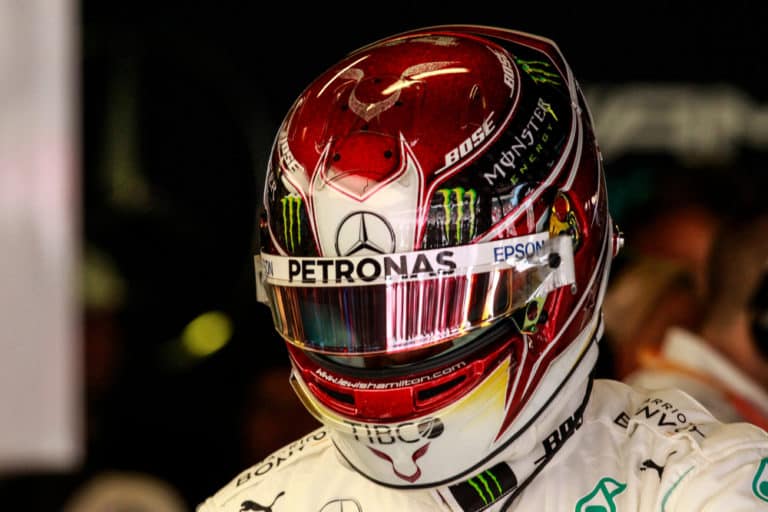Formula 1 drivers are the best drivers globally, but how do they go around corners so fast? What type of Steering system do they use, and what forces do the drives feel in the corners? Let’s find out in how heavy F1 steering is?
A Formula 1 race car uses a hydraulically assisted Rack and Pinion steering assembly to steer the car. The Hydraulic power steering helps the driver turn the steering wheel, but other car components, such as suspension and the differential, assist the car to take corners at high speeds.
A Formula 1 race car is intended to drive fast and break hard, but how do they glide through the corners like they are on rails. To discover how to steer an F1 car and how a race driver will train to take corners at high speed, read on:
If you’re looking for some F1 merchandise, check out the awesome stuff at the official F1 store here.
How Heavy Is F1 Steering?
Formula 1 cars use the reliable Rack and Pinion steering assembly for its direct feel and precision. The cars have hydraulic power steering, as it would be almost impossible to steer without it. The large surface area of the tires adds resistance at low speeds, but the G force and downforce offer the most steering resistance at speeds of 60mph or higher.
The Steering Columb Assemble?
The steering column has carbon fiber, Titanium, Aluminum, and lightweight steel components. It has two tubes connected with a velocity joint; this ensures the two parts rotate at the same speed. There is a quick release at the driver’s end of the column to allow the driver to attach or remove the steering wheel. The hydraulic steering pump connects to the column’s bottom end, and the control arms and tie rods connect the wheels to it.
How Do F1 Cars Take Corners So Fast?
To steer a Formula 1 car is hard as it takes input from the driver and other systems in the car to perform optimally. The steering column in the cars is simplistic and can turn the wheels from side to side, but that is not how a formula 1 car can take corners at high speeds. The following are the main factors that make an F1 car corner at high speeds:
The Driver
The driver must be fit and strong to make the slight adjustments required before, during, and after the corner. The driver needs to see the corner’s apex and adjust his driving line if other cars will hinder his line.
The Steering Wheel
The Display on the steering wheel will supply the driver with information from the car systems. Still, the driver will need to input the correct settings, such as selecting the right gear and applying the correct steering input throughout the corner.
The Steering Assembly
The driver’s inputs transfer through the steering assembly to the car’s wheels, and this component must be robust, accurate, and reliable.
The Suspension
The suspension allows the car to balance itself in the turns. The control arms will relay all the wheel’s movements to the driver via the steering column. Having the correct suspension setup is vital to the turning performance of the car.
The Break peddle and Accelerator.
When the car is in the corner, and the driver wants to turn sharper, he will decelerate or apply the brakes and accelerate if he wants to move to the outer side of the track.
All of these inputs must synchronize to deliver the best results, and all this has to be done in seconds and under high G force conditions.
What Forces Does A F1 Experience While Steering?
A Formula 1 driver will experience massive G-Forces while driving, which will affect how the car handles. A driver will experience up to 2 Gs while accelerating, 5 Gs while breaking, and between 4 to 6 Gs in fast cornering. The steering wheel of an F1 Car weighs 3-4 pounds, and this will need to be held and controlled by the driver in a high G turn. The driver must overcome these immense forces while turning the steering wheel.
What Is The Functionality Of The F1 Steering Wheel?
The steering wheel does not just assist the driver in turning the front wheels. The driver can adjust the car’s systems using the buttons on the steering wheel, including brake bias, brake pressure, differential rotational speed control, and engine mapping.
Some steering wheels can have over 24 different knobs and buttons, and the driver can change these settings to assist with turning the car.
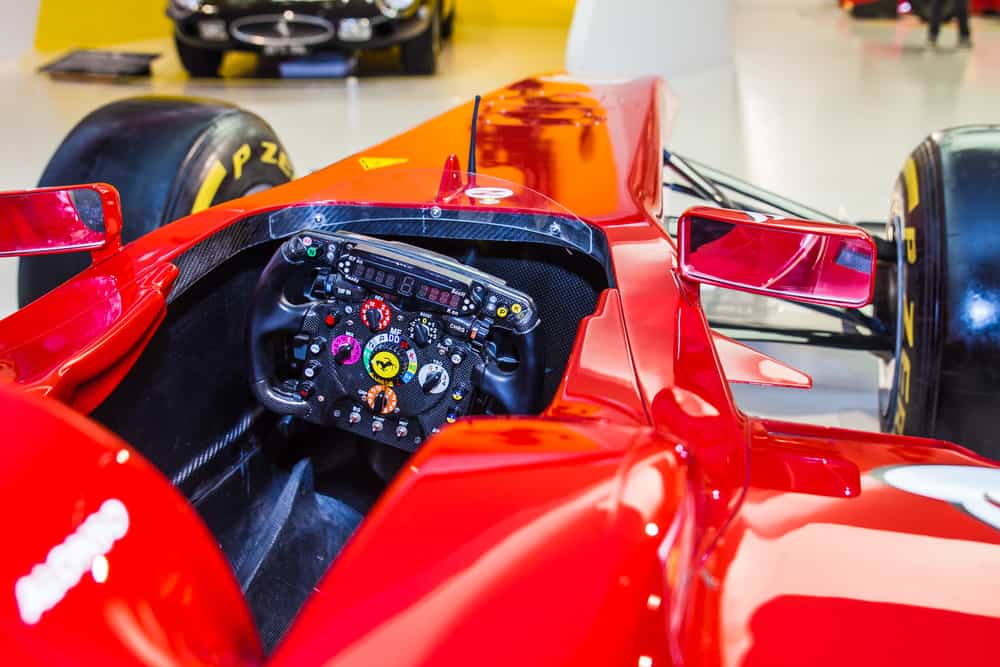
What Physical Exercise Do F1 Drivers Undergo To Assist With Steering?
A formula 1 driver must be healthy and fit, but they will also need to train themselves to withstand the high G forces they will endure during a race.
- Reflex training forms a significant part of the training as the drivers must react quickly to what might happen during the race.
- All the drivers do neck strengthening exercises as they will need to keep their head up during corners, braking, and accelerating. Drivers will practice this by wearing a helmet with a solid elastic cord attached to it. The elastic is pulled in different directions while the drive fights to keep his head straight.
- Weight steering training is when the drives will take a weight similar in size to the steering wheel and do a repetition of twisting and turning simulating the car steering.
Conclusion
Steering a Formula 1 car through high-speed corners takes much more than just a turn of the steering wheel. It requires multiple inputs and setting to be made by the driver. The driver will select the correct gear, differential speed, brake bias and turn the steering wheel to take the corner at high speed.
The driver must withstand the high G-forces associated with turning at high speed and make all the changes and adjustments under these conditions. Formula 1 drivers are the best at what they do, but we need to appreciate the technology that allows them to be part of this prestigious motorsport.

